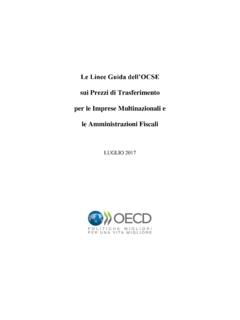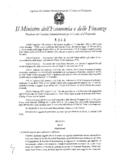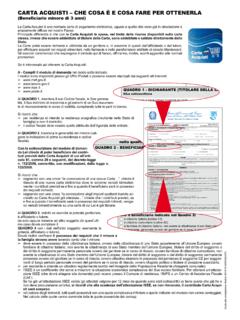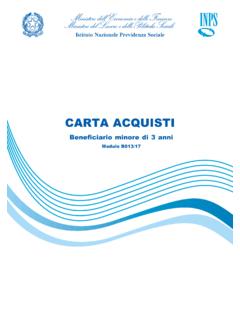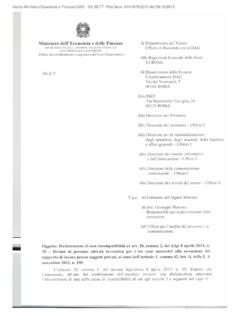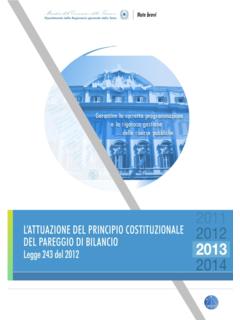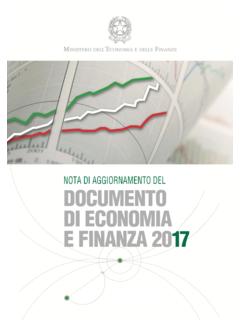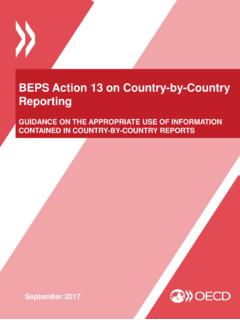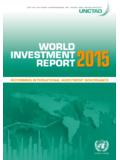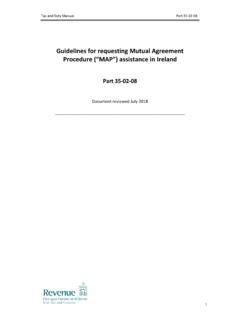Transcription of ITALY S TAX ADMINISTRATION
1 ITALY S TAX ADMINISTRATION A Review of Institutional and Governance Aspects FOR OFFICIAL USE FOR OFFICIAL USE 3 Table of contents Chapter 1. Introduction .. 5 Chapter 2. Key findings and recommendations .. 7 A. Key findings .. 7 B. Recommendations .. 10 Chapter 3. Overall trends in tax collection and compliance .. 15 A. Tax collection as a share of GDP .. 15 B. Estimates of the tax gap in ITALY .. 16 C. The incidence of tax debts and their trend .. 18 D. The tax compliance burden imposed on business .. 19 Chapter 4. Designing a modern tax ADMINISTRATION .. 21 A. Key elements of a modern tax ADMINISTRATION .
2 21 B. Institutional and organisational set up .. 22 C. Strategic management and performance measurement .. 30 D. The autonomy of the Revenue and Customs agencies .. 35 E. Recommendations .. 41 Chapter 5. Managing tax compliance: Targeted issues identified .. 43 A. ITALY s context and approach to managing tax compliance .. 43 B. Targeted issues identified in light of international trends and practices .. 45 C. Recommendations .. 53 Chapter 6. Enforced tax collection: Targeted issues identified .. 55 A. ITALY s context and approach to tax debt collection .. 55 B. Targeted issues identified in light of international trends and practices.
3 57 C. Recommendations .. 60 Annex A. List of officials and stakeholders met .. 63 Annex B. The use of tax gap estimation in national tax ADMINISTRATION .. 67 Annex C. Entities involved in tax ADMINISTRATION and their functions .. 71 Annex D. Overview of performance agreements in selected countries .. 75 Annex E. References .. 81 FOR OFFICIAL USE 4 Tables Table 1. Overall tax collection in ITALY as a share of GDP (2010-13) .. 15 Table 2. ITALY s tax debt inventory (2011-13) .. 18 Table 3. Institutional Arrangements for Tax ADMINISTRATION in G20 Member Countries .. 29 Table 4.
4 Major Taxes Administered by National Revenue Bodies in G20 Member Countries .. 30 Table 5. Revenue Agency - Objectives 2015 .. 31 Table 6. Examples of high level performance measures used by revenue bodies .. 34 Table 7. Verification activities of Revenue Agencies and Tax Police .. 48 Table 8. Use of instalment plans to collect tax debts (2010-15) .. 57 Table 9. Debt inventory metrics (end 2014) .. 58 Table 10. Tax gap estimation activities of national revenue bodies .. 70 Table 11. ATO s impact .. 76 Table 12. Objectives and impact .. 77 Table 13. New Zealand's objectives and impact indicators.
5 78 Table 14. The United Kingdom's objectives and impact indicators .. 78 Table 15. The United States' objectives and impact .. 79 Figures Figure 1. VAT Gap in EU 26 Countries (2012 and 2013) .. 17 Figure 2. Year-end tax debt on net revenue collected (2011-13) .. 19 Figure 3. Collecting national taxes in ITALY : The main entities involved .. 24 Figure 4. The functions involved for administering taxes and the responsible bodies in ITALY .. 27 Figure 5. Essential elements of a human resource management strategy .. 40 Figure 6. Debts collected each year (EUR billion) .. 57 Boxes Box 1.
6 Guidance of institutional/organisational setups and governance arrangements .. 22 Box 2. Recent initiatives to improve taxpayers compliance .. 44 Box 3. The use of multi-faceted strategies to address non-compliance in the underground economy .. 46 Box 4. Successfully establishing a co-operative compliance programme .. 50 Box 5. The Base Erosion and Profit Shifting Project .. 51 Box 6. The Common Reporting Standard .. 52 Box 7. Important features of tax system design and ADMINISTRATION for effective tax debt collection .. 59 Box 8. Design criteria for an effective tax gap estimation framework.
7 68 Box 9. Denmark: Using data from random audits to change compliance behaviour .. 68 FOR OFFICIAL USE 5 Chapter 1 Introduction 1. ITALY is currently undertaking a series of critically important reforms to improve its long-term growth prospects. The current Government has set out its ambitious reform agenda across many policy areas including education, civil justice, public ADMINISTRATION and taxation. Certain reforms have already been made, others are under way and more are in the pipeline. Expectations of effective and decisive government actions are high, in particular regarding the tax system.
8 2. In this context, and following a request of the Italian Minister of Economy and Finance Pier Carlo Padoan, the OECD Centre for Tax Policy and ADMINISTRATION has carried out a review of the organisational structure and institutional arrangements of ITALY s tax ADMINISTRATION , with a focus on the Agenzia delle Entrate (the Revenue Agency) and the Agenzia delle Dogane e dei Monopoli (the Customs Agency). The review also highlights certain critical issues related to tax compliance and collection which emerged in the course of the work. 3.
9 Several meetings were held with the Italian authorities, namely the Minister of Economy and Finance and the heads and senior managers of the Italian institutions involved in tax ADMINISTRATION . Meetings were also held with labour unions, stakeholders and experts in tax matters, including small and medium sized enterprises (SMEs) and their consultants, to gather a broad range of views on ITALY s tax ADMINISTRATION (see Annex A for the list of authorities, stakeholders and experts met). 4. A draft of this report was provided to the Italian authorities in January 2016 to check the factual descriptions accuracy and finalised shortly 1.
10 This work is published under the responsibility of the Secretary-General of the OECD. The opinions expressed and the arguments employed herein do not necessarily reflect the official views of the OECD or the governments of OECD member countries. This document and any map included herein are without prejudice to the status of or sovereignty over any territory, to the delimitation of international frontiers and boundaries and to the name of any territory, city or area. FOR OFFICIAL USE 7 Chapter 2 Key findings and recommendations A. Key findings 5.
